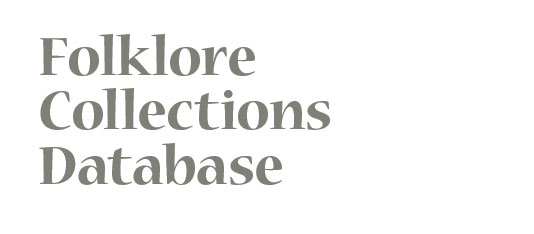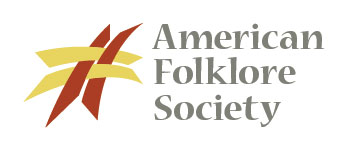Administrative/Biographical History ElementThe Hocak Wazijaci Artistic Traditions project grew from collaborations between Ho-Chunk elder Kenneth Funmaker Sr., then Director of the Hocak Wazijaci Language and Culture Preservation Committee, and folklorist James P. Leary, who had worked together on a number of previous initiatives. Leary acted as project director through the Wisconsin Folk Museum, which served as the fiscal agent for the Hocak Wazijaci Language and Culture Preservation Committee. He and Ho-Chunk members Michelle Greendeer and Randy Tallmadge documented the artists. At the time Greendeer and Tallmadge were undergraduate students at the University of Wisconsin-Madison who had taken Folklore Program courses from Leary. Tallmadge earned an Anthropology degree and later worked for several years as the archivist for the Hocak Wazijaci Language Division. Greendeer went on to earn a law degree from UW-Madison and works for the Ho-Chunk Nation specializing in land claims.
In 1994, Kenneth Funmaker Sr., then directing the newly-formed Hocak Wazijaci Language and Culture Preservation Committee, initiated a project to document a number of elder Ho-Chunk (then still termed "Winnebago") traditional artists as the first step in documenting, preserving, and presenting the artistic traditions of Ho-Chunk people. Folklorist James P. Leary, then at the Wisconsin Folk Museum, helped secure funding through the museum from the Folk Arts Program of the National Endowment for the Arts and the Fund for Folk Culture's Community Folklife Program. Lila Greengrass Blackdeer (maker of regalia,
pah-keh beadwork, and black ash splint baskets), drummaker Victor Browneagle, black ash splint basketmaker Ruth Cloud, fancy dressmaker Suzette LaMere Daugherty, beadworker Polly O'Brien, fingerwoven sashmaker Willa Red Cloud, sculptor and painter Harry Whitehorse, and quillworker Mike Winneshiek were identified as exemplary Ho-Chunk traditional artists and craftspeople. Leary supervised University of Wisconsin-Madison undergraduates and Ho-Chunks Michelle Greendeer and Randy Tallmadge as they documented the masters and generated materials for a photo-text exhibit and booklet.
Leary, Greendeer, and Tallmadge, assisted by folklorist Janet C. Gilmore, produced a traveling photo-text exhibit based on the lives and work of the documented traditional artists. It debuted at a two-day "Hocak Wazijaci Art Show," September 24-25, 1994, held in conjunction with the General Council meeting of Wisconsin's Ho-Chunk Nation in Black River Falls, Wisconsin. The artists displayed their work and judged works submitted by others at the show. A booklet profiling the artists, based on the exhibit text and images, was published afterwards. The photo-text exhibit components and original documentation are lodged in the Language Division archives in Mauston, Wisconsin. Leary retains copies of some fieldwork and exhibit documentation as well as grant and financial records.
Scope and Content Note
Hoocąk Waaziija Haci Language Division holds the original documentation, including sound recordings, interview transcriptions, image logs, 35 mm color slides, black-and-white photographs, negatives, and mounted photos from the traveling exhibit. Documentation on drummaker Victor Browneagle is viewable by permission to members of the Ho-Chunk Nation only.
Jim Leary's personal collection of manuscript materials includes a file for each artist documented (7 altogether), and 8 project files that contain grant proposals, correspondence, reports and financial information, as well as documentation of the fieldwork and exhibit production stages, and exhibit text that features the lives and work of the traditional artists involved in the project. Each artist file contains the tape index of the interview and correspondence concerning the art show; some include rough drafts of quotes and exhibit text. The Lila Greengrass Blackdeer folder also possesses material concerning her nomination and receipt of a National Heritage Fellowship in 1999.
This project took place during a transition in the Ho-Chunk Nation's official name. Earlier records of the project often bear the former name "Winnebago" instead of "Ho-Chunk" or "Hocak," in Hocak orthography.
Custodial HistoryThis documentation was created with the intent that it would be housed and made publicly accessible in the archives of the Hocak Wazijaci Language and Culture Preservation Committee, now called the Hoocąk Waaziija Haci Language Division, in Mauston, Wis.
Conditions Governing Access
Documentation on drummaker Victor Browneagle is viewable by permission to members of the Ho-Chunk Nation only. Consult the records custodians for specific information on access to other materials.
Hoocąk Waaziija Haci Language Division
P.O. Box 390, Hwy 58
Mauston, WI 53948
Phone: (608) 847-5694
Web site: http://www.hocak.info
Prof. James P. Leary
209 S 4th St.
Mount Horeb, WI 53572
Phone: (608) 847-5694
Email:
jpleary@wisc.eduConditions Governing ReproductionConsult the Hoocąk Waaziija Haci Language Division for information on appropriate use of the documents housed there. Review of the materials held by James P. Leary for non-profit personal, educational, and research purposes may be arranged, but prospective use of his materials for public presentation, publication, and production requires permission from the Language Division.

